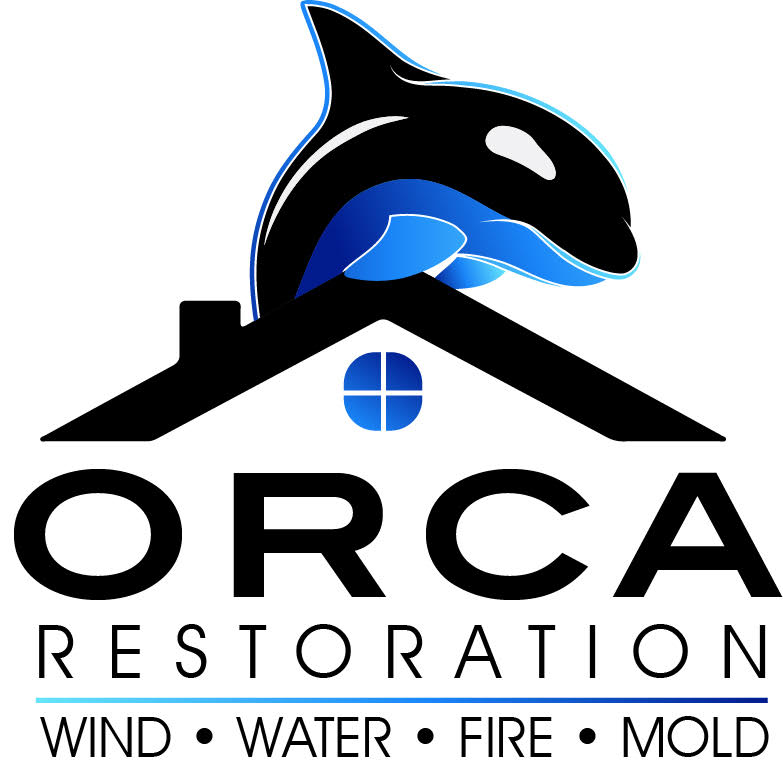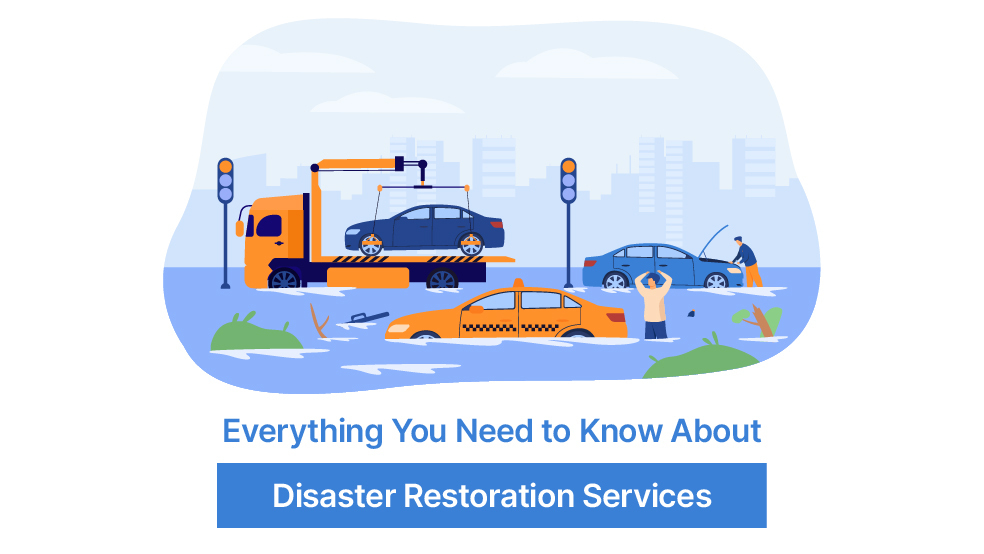Tsunami Strikes Again. Hurricane Destroys Capital. Volcanic Eruption Rages On! These headlines don’t merely strike fear in our hearts; they have a significant effect on property owners. Disasters both natural and man-made leave properties and everything within their reach bruised and battered. Thus, increasing the need for disaster restoration services exponentially.
What is restoration in disaster management?
Restoration in disaster management is the process of using restoration companies licensed by the state to fix the property damage made by water, fire, flood, hurricane, and other disasters. Disaster restoration services include performing home and property repairs, cleaning up the mess made by disasters, and preventing further damage to a home or any other property.
However, homeowners and property managers are not well-versed in how disaster restoration services work. And, when a disaster strikes, they scurry around googling to find information on what to do next. To help prevent the last-minute hurry-burry, we have created this detailed blog on everything property managers and homeowners need to know about disaster restoration services.
Different types of disaster restoration services
There are various types of disaster restoration services offered by restoration companies, and they are:
Water damage restoration services
There is an array of reasons for property damage (either a home or a commercial building); there are several potential causes, including rain, flood, hurricane, and more. At the same time, natural disasters are a common cause of water damage, some uncommon causes include leaking pipes, leaks, and overflows.Unattended water damage restoration can result in various complications ranging from something inconspicuous like mold growth to something disastrous like structural damage. Water damage restoration services aspire to remove excess water and repair the resulting cracks by using advanced water extraction equipment.
Smoke and fire damage restoration services
Not many events can match fire and smoke destruction. What’s more? The National Fire Protection Association (NFPA) claims that around 1200 toxic gases are released in structure fires. This proves that the restoration of properties after fire damage is paramount. Restoration companies use a combination of services, processes, and techniques to restore buildings to pre-loss conditions.
Listed below are some steps taken by restoration companies to restore a property to pristine condition after fire damage:
- Deodorize the building by removing the debris and soot
- Cleaning the affected areas thoroughly
- Recreating malodor (the odoriferous molecule)
- Sealing the air space with oxidizers like ozone generators.
- Shoring and bracing, boarding up the structural damage, and installing safety tarps.
Flood damage restoration services
Flood damage always makes property owners feel helpless. Buildings affected by cyclones, hurricanes, and floods need to undergo damage restoration as soon as possible. Flood damage restoration services minimize the damage made by waterworks and reduce the chance of health hazards.Restoration professionals will perform the flood damage restoration process once the water level drops. First, these professionals pump out any excess water from the building. Then, they remove furniture and appliances that are battered beyond repair. The next step is decontaminating and cleaning the building while checking for and taking care of any structural damages or potential hazards.
Storm damage restoration services
Tornados and hurricanes, both expected and unexpected, cause substantial wind and hail damage to properties. Storms can unleash elements ranging from wind and water to hail and uprooted trees that damage buildings. In the winter, blizzards can cause damage with speedy wind and ice damming.Expert restoration companies will offer instant help to secure a building and prevent the further storm, hurricane, or tornado damages. Listed below are some hurricane damage services provided by ideal disaster restoration services companies:
- Initiating emergency board up
- Offering wind and water damage services
- Installing tarps and building shrink wraps
- Putting up perimeter fences
All these steps taken by disaster restoration professionals help protect property during and after a storm, hurricane, or tornado.
Mold damage and remediation services
Buildings exposed to water damage or moisture issues are at the risk of cultivating mold growth and damage. While several hundred types of molds are available, nearly all of them expose humans residing in the building to health hazards and air-quality problems.Removal and remediation of mold are much more than merely washing the affected area and visible traces of mold with bleach and washing powder. Proper mold remediation demands a professional removal plan orchestrated by mold damage and remediation professionals.
Step-by-step process of disaster restoration services
Right after a disaster strikes, homeowners and building managers will be flustered and worried as they have no clue where to start or whom to contact. This step-by-step guide about disaster restoration services will clearly explain every step of the process.
- After a storm, flood, or fire accident, homeowners and building managers first need to place a call to their insurance agent or another representative from their insurance agency.
- The insurance agency will guide them about the claims process and provide them information about restoration companies tied up with them or available for immediate help within the vicinity.
- Even though an insurance company reaches out to the restoration company, the client will always be the homeowner or building manager.
- Once the restoration company representatives arrive at the site, they will take a thorough walk through the building and discuss with the client about areas that need to be cleaned and restoration services that must be performed.
- While the claim representative may offer their advice on how the cleaning needs to be performed, the final decision lies in the client’s hands.
- Once the initial assessment is complete, the restoration company representatives will provide their clients with an estimate for their services detailing what type of services will be performed, how many labors will be required, and how much it will cost.
- The contract negotiation will begin after the client reads through and accepts the estimate. Homeowners and building managers need to read and sign this contract before the restoration services start.
- Right after the client agrees to the estimate and signs the contract, the restoration company will start performing the damage restoration and remediation process as outlined in the contract.
- Once the restoration company representatives complete the contractual obligations, an invoice will be generated and shared with the client. The client is responsible for paying the restoration company as some of the work that the restoration company performs may or may not be covered under the insurance claim.
- As agreed during the contractual process, the client must make payment for the restoration company’s invoice within the payment cycle mentioned in the contract or invoice.

